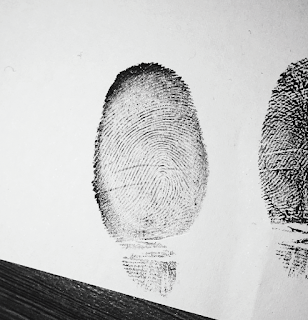,
The first advert analysis I did was Jay-Z's magazine advert for his album 'The Blueprint 3'.
Background Information
During a rough adolescence, a topic that is addressed quite frequently in his autobiographical songs, Jay-Z, Shawn Carters' stage name, expresses how he dealt with drugs and gun violence. Jay-Z later recalled in one of his songs ('December 4th'): 'I went to school, got good grades, could behave when I wanted/ But I had demons deep inside that would raise when confronted.'
At a young age Carter turned to raping to escape from the drugs and poverty that surrounded him and in 1989 he began working with the rapper Jaz-O to record a song called 'The Originators' which later won both the rappers an appearance on an episode of Yo! MTV Raps.
In 1996 Carter released his first album 'Reasonable Doubt' that reached No. 23 on the Billboard 200, and in 1998 he released his second album 'Vol. 2... Hard Knock Life' the title track later famously became featured in the Broadway musical Annie and then nominated for a Grammy.
In 2003 Jay-Z retired from raping but began to creating music again three years later. In 2009 'Blueprint 3' was released along side two others, the trio of albums released marked a significant time in the development of Jay-Z's sound and music from rap to more R&B/ soulful.
During his break from rapping, Jay-Z moved his attention to the business side of music, signing a $150 million contract with the company Live Nation that then grew in size to be later renamed Roc Nation, a company that handles artists careers. Jay-Z became the president of Def Jam, Jay-Z and later signed artists such as Rihanna, Ne-Yo and Kanye West through the company to develop and transition their artistic talents.
The main image consists of a white background and a pile of white painted musical instruments and speakers. The contrast between white and black creates a separation from the body of the instruments to the black keys and buttons stand out. Across this image are three red lines that both signifies the release of Jay-Z's trio of albums and a more mathematical definition when two formula's are logically equivalent when all models give them the same value.
During his break from rapping, Jay-Z moved his attention to the business side of music, signing a $150 million contract with the company Live Nation that then grew in size to be later renamed Roc Nation, a company that handles artists careers. Jay-Z became the president of Def Jam, Jay-Z and later signed artists such as Rihanna, Ne-Yo and Kanye West through the company to develop and transition their artistic talents.
Main Image
The main image consists of a white background and a pile of white painted musical instruments and speakers. The contrast between white and black creates a separation from the body of the instruments to the black keys and buttons stand out. Across this image are three red lines that both signifies the release of Jay-Z's trio of albums and a more mathematical definition when two formula's are logically equivalent when all models give them the same value.
Title
On this magazine advert there are two titles, the name of the artist and the name of the Album. The name 'Jay-Z' is written in a bold and wide blank font, it is centralised on the poster, above the three red lines which helps it to stand out. The actual font itself dominates and is one of the first things that the receiving audience will look at. The simplicity of the poster enables the primary focus to fall on the name of the artist and the red three lines in the middle of the poster.
Layout
The edited overlaid three lines are centralised on the background of the poster, covering the background design of white painted musical instruments piled on top of one another. The title of the album and the artists name is edited and placed above the background of instruments and the information involving the album release and credits are placed at the bottom of the poster with equal spacing between the three sections of information.
Font
We have three different types of font on this advert. First is the name of the artist, written in bold, black cursive, it seems to have been stretched in an irregular font and stands out dramatically. The second style of font is the title of the album, the size is smaller than the title of the artist and is printed in black, capital narrow font. The information telling the audience the release of the album also uses the same font as the one used for the title of the album. The third font is used to print the artists website. It is written in capitals and published in a smaller font than the size used to tell the audience about the release of the album. This shows that this piece of information is more of a minor heading.
Colour Scheme
The colour scheme consists of both bright and dark colours, the background includes the white, grey and lighter purple colours in the colour scheme. The font that is edited and overlaid across the background uses black and the triple bar across the centre of the poster is in bright red, though only slightly transparent the colour is darker in some places due to the background instruments.


























